The Royal Fly Past takes place after great state occasions, most particularly after events such as Trooping of the Colour, the official celebration of the monarch’s birthday. The Trooping takes place on a Saturday in June every year. Although the date might not coincide with the actual birthday of the monarch – King Charles III was born on 14th November 1948 – it is a convenient date for the ceremony, which takes place when the British weather is usually at its best. Since the accession of George III in 1760, Trooping of the Colour has been an annual event.
Audience numbers at Trooping of the Colour are limited to 8,000, and spectators, who are selected by ballot, can only buy a maximum of four tickets each. However, millions of people watch the event on television, and there are always large crowds present along the Mall for the royal procession from Buckingham Palace and the return. At one o’clock in the afternoon, it is now traditional to have a flypast by aircraft from the Royal Air Force (RAF).
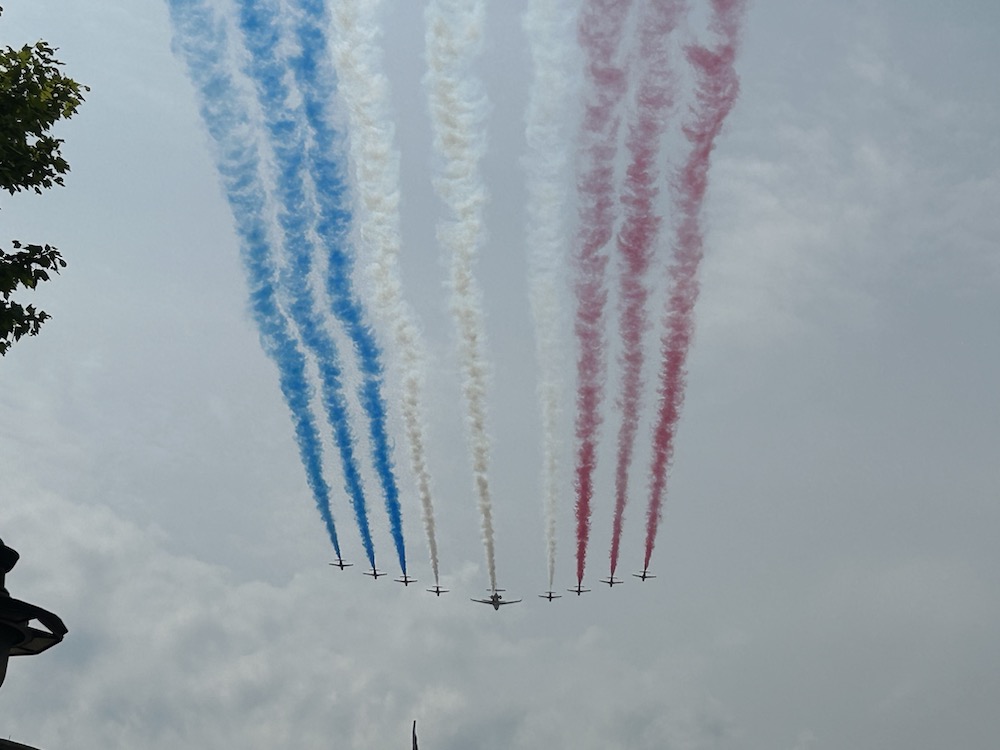 Red Arrows at The Royal Fly Past. Photo Credit: © Edwin Lerner.
Red Arrows at The Royal Fly Past. Photo Credit: © Edwin Lerner.
The Royal Fly Past at Trooping of the Colour
The Royal Fly Past takes place after great state occasions, most particularly after events such as The Trooping of the Colour, the official celebration of the monarch’s birthday. The Trooping takes place on a Saturday in June every year. Although the date might not coincide with the actual birthday of the monarch – King Charles was born on 14th November 1948 – it is a convenient date for the ceremony, which takes place when the British weather is usually at its best. Since the accession of George III in 1760, the Trooping has been an annual event.
Audience numbers at The Trooping of the Colour are limited to 8,000, and spectators, who are selected by ballot, can only buy a maximum of four tickets each. However, millions of people watch the event on television, and there are always large crowds present along the Mall for the procession from Buckingham Palace and the royal return later. At one o’clock in the afternoon, it is traditional to have a Fly Past by aircraft from the Royal Air Force (RAF). This display normally ends with formation flying by a team known as the Red Arrows.
The first Fly Past by the newly formed RAF was in 1913. In 1925, The British Empire Show was held at Wembley Stadium in London and featured a Fly Past six times a week. It was called London Defended and was used to reassure the mainly British spectators that the RAF could well defend their capital. The planes used were Sopwith Snipes which were painted red so that they would be more visible to the spectators in the crowd below.
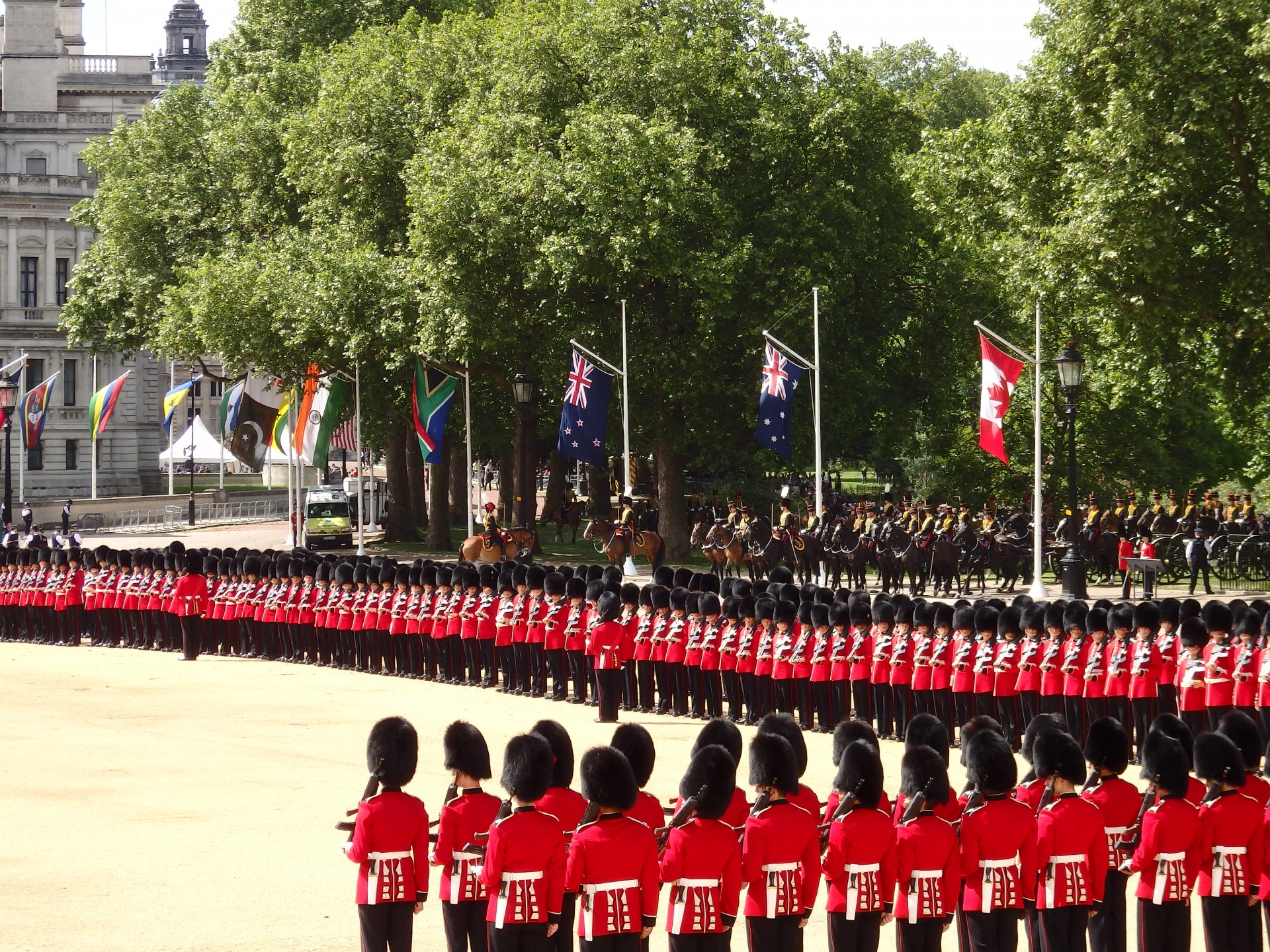 Trooping The Colour. Photo Credit: ©Blue Badge Tourist Guide, Angela Morgan.
Trooping The Colour. Photo Credit: ©Blue Badge Tourist Guide, Angela Morgan.
Red Arrows at The Royal Fly Past
The Red Arrows team, officially called the Royal Air Force Acrobatic Team, was formed in 1964 by amalgamating all the flying squadrons that performed acrobatic stunts in the sky. They were originally called the ‘Black Arrows,’ but the colour red was adopted as it was far more visible during the often complex and intricate aerial manoeuvres the team became famous for. They performed Fly Pasts to celebrate the Silver Jubilee of Queen Elizabeth in 1977, the Golden Jubilee in 2002, her Diamond Jubilee in 2012 and Platinum Jubilee in 2022.
Red Arrow planes are flown by nine volunteer pilots, each of whom has served in military missions overseas and has completed at least 1500 hours in a fast jet such as a Tornado, Harrier or Tornado. The pilots have all been rated as ‘above average’ in their operational roles, and every pilot in the Red Arrows team has a position to hold in the formation. As there are no reserve pilots, the team fly with only eight planes if one is unable to perform.
Competition to join the Red Arrows is intense, and pilots who are eligible have to face a rigorous process of selection. They wear a green flying suit in training and, once they have been accepted into the team, a red suit. Female pilots have been included since 2009, the first being Flight Lieutenant Kirsty Moore, who joined for the 2010 Fly Past season.
The Red Arrows cost £10 million annually and have been threatened with abolition at times of defence cuts. However, they are considered an important symbol of the RAF and a popular part of the RAF and their future has been guaranteed by the UK government. Since their formation, they have performed 5,000 times around the world in fifty-seven countries.
The plane flown in a Red Arrows formation is a Hawk T1A, which has a maximum speed of 638 mph (1,028 kph) and a range of 1565 miles (2520 kilometres). They have been adapted to spread red, white and blue dyes behind them. These are the colours of the national flag of Great Britain; the Union Jack and the crowd observing the Fly Past from the Mall below gasped in delight as the Arrows flew overhead with their patriotic streamers behind.
The Fly Past, after the first Trooping of the Colour attended by King Charles III in 2023, celebrated the Second World War. Amongst the aeroplanes seen were three Hercules bombers. The Hercules had been in service since 1966 and was retired shortly after the 2023 Fly Past. A group of eighteen Typhoon jets also formed the initials ‘C R’ (standing for ‘Carolus Rex’) in the sky in honour of King Charles in a move that was not expected by the new king.
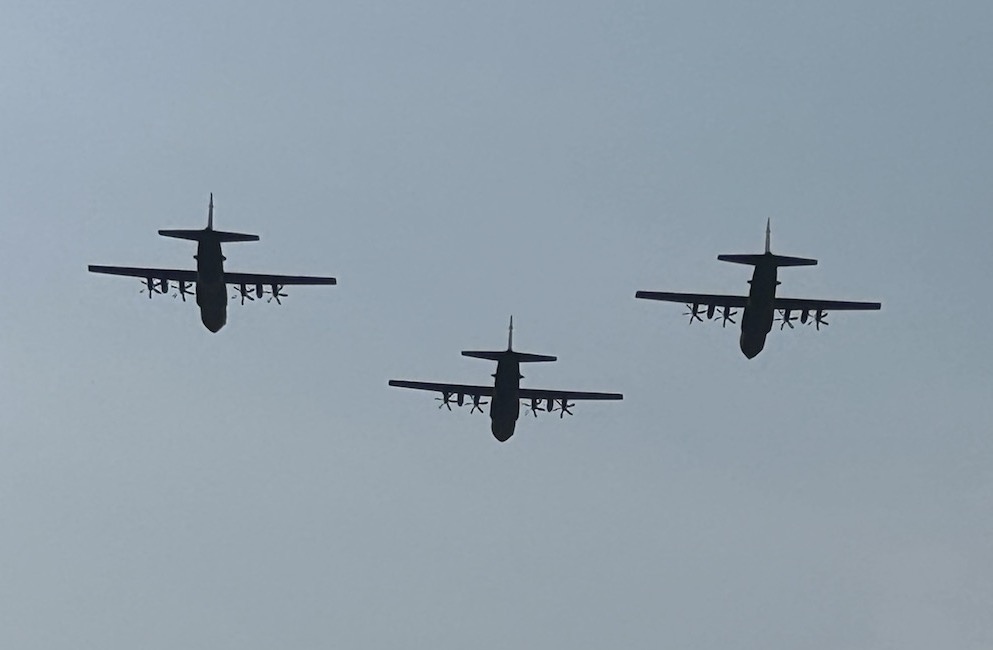 Three Hercules bombers at The Trooping of the Colour 2023. Photo Credit: © Edwin Lerner.
Three Hercules bombers at The Trooping of the Colour 2023. Photo Credit: © Edwin Lerner.
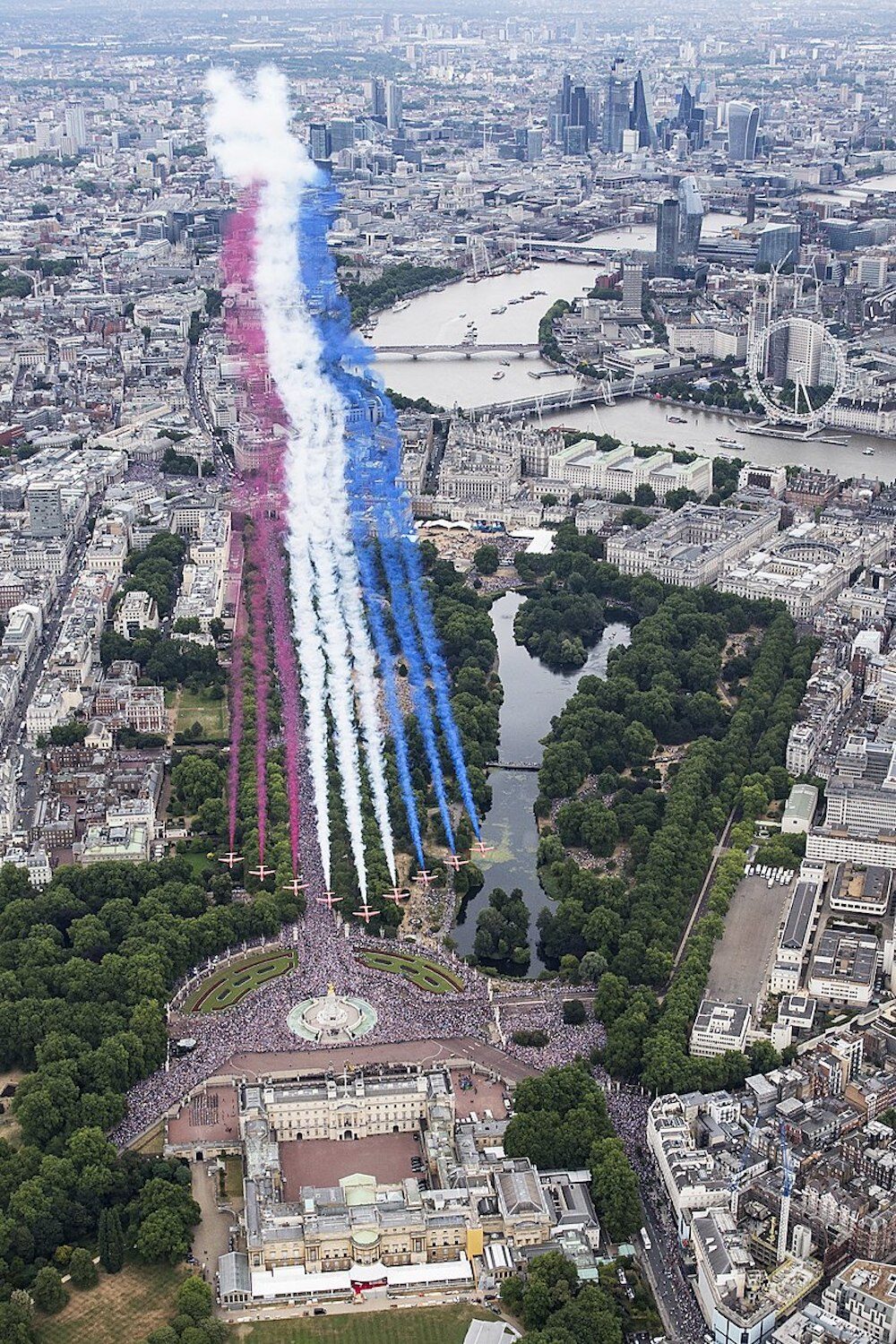 Red Arrows taking part in the RAF100 parade and flypast over London. Photo Credit: © Cpl Tim Laurence RAF/MOD via Wikimedia Commons.
Red Arrows taking part in the RAF100 parade and flypast over London. Photo Credit: © Cpl Tim Laurence RAF/MOD via Wikimedia Commons.



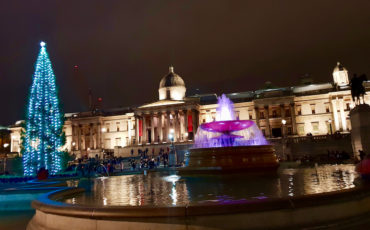
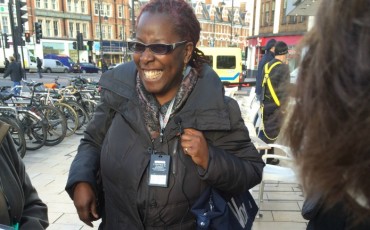


Leave a Reply